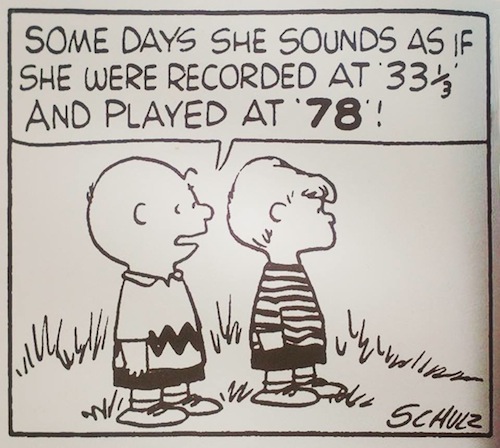Bill C. Foster, also known by many of his closer acquaintances as Bill Jr. (or just Junior), was most notably known as the owner, editor, and publisher of the Waco Citizen. The Citizen, while centered in Waco, serviced cities all throughout central Texas and became a central part of the world of local Texas media. A sharp businessman, Foster was always buying other local papers to grow his own business, included the Moody Courier (later known as the Suburban Courier), the Mexia News, Fairfield Recorder, The Clifton Recorder, The Meridian Tribune, and the Valley Mills Progress. His news empire soon became known as the “News Center of Central Texas”.
Willie Stephen Foster (known as W.S. or Bill Sr.) opened up the Waco Citizen in 1946 at 319 Franklin Avenue, Waco. However, he didn’t just start it from scratch. He purchased the Texas Citizen, another smalltime paper, in order to start off his new business with a solid customer base. While Bill Sr. may have been the founder of the Citizen, he wasn’t always the best at managing it. According to his own son, Bill Sr. was “a journalist, reporter, Linotype operator, lawyer, politician, legislator, landlord/ Would give you the shirt off his back. Wasn’t the best businessman”. Bill Jr. saw that his father was a jack-of-all-trades, good at everything, but not really a master in any one area. Bill Jr., on the other hand, knew that he wanted to excel at something, and as he grew older, he had his eyes on the Citizen.
_________________________________________________________________________________
W.S. Bill Foster holding his infant son, Bill C. Foster, accompanied by an unidentified young lady.
_________________________________________________________________________________
Growing up tinkering with the printing machines in his dad’s garage, visiting his dad’s office, and taking pictures of local buildings, Bill Jr. was practically bred for the paper business. His mother, Vera Chadwick Foster, also had roots in the news industry, having worked for the Waco Press. By the ninth grade, Bill Jr. had started working at the Citizen, beginning a career in the newsprint business that would last almost three quarters of a century. He attended Tech High School in Waco before enrolling as a student at Baylor University, just like his father before him. After graduating and working for his father for an unknown amount of time, Bill Jr. Gained control of the Citizen and began his long tenure as a local newsprint mogul.
________________________________________________________________________________
Foster’s secondary education was at Waco Technical High School, which renamed as University High School in 1954.
_________________________________________________________________________________
Although Waco may seem on the surface to be just a quite Texas town, there were many high-profile stories that he covered during his time at the Citizen that eventually garnered national attention. Some of his most famous included the Waco Tornado of 1953, the discovery of the Waco Mammoth Site in 1978, and the Waco Siege at the Branch-Davidian compound in 1993. As an avid traveler and lover of world events, he also helped to connect the public of Waco with the rest of the world, reporting on President Reagan’s visit to Baylor in 1988 and the speeches that Vladimir Putin and George W. Bush gave at Crawford H.S. in 2001. In his autobiography, Press Pass Gets You in the Door, he dives even further into these events and many others. Foster was also a longtime member of the Texas Press Association, the Texas Community Newspapers, and the National Newspaper Association.
_________________________________________________________________________________
Bill Foster Covers the speeches of President George W. Bush and President Vladimir Putin of Russia in Crawford, Tx. at Crawford High School. President Bush announces he will visit Russia to discuss important issues with President Putin, but jokes that he will only visit when Russia had some warmer weather.
_________________________________________________________________________________
In public life, Bill Jr. was heavily involved with the local community, running local beauty pageants such as the Miss Waco and Teen Miss America competitions. He was heavily invested in the local Lion’s Club chapter, having been the Public Relations Chairman for 10+ years. Additionally, as a devout Methodist, he researched and documented the history of his own personal church, the First United Methodist Church of Waco. This church was founded in 1850, making it the oldest institution in Waco. Mr. Foster was also a member of the group of local businessmen and politicians that came together to found Celebrate Waco. This event was a showcase of local businesses such as the Texas Hall of Fame, the Texas Rangers Museum, and the Dr. Pepper Museum. Foster even moved his Miss Waco Beauty Pageant to the convention center to grow the repertoire of events during the event.
_________________________________________________________________________________
Bill Foster in Moody, Texas
_________________________________________________________________________________
Bill Jr.’s personal life was simple, and, according to him, mostly happy. He married Camelia Rentz in 1953, having two children, named Cheryl and Jennifer. Camelia began to work for the Citizen after their marriage and was heavily involved in the community as well. Unfortunately, Camelia died on May 5, 1990 due to a major heart attack while taking care of Bill Jr.’s sick brother Brady, which was doubly unexpected due to her only being 55 years old at the time. Bill Jr. eventually remarried, wedding Ellen Foster on May 14, 1993.
_________________________________________________________________________________
The inscription reads: “THE W.S. FOSTER FAMILY got together for another Christmas picture. It was the same Merry Christmas wish in 1935 as in 1978, showing an increase in sizes and ages. Mother Vera Foster is on left, on down the line, Barbra Dell Sutter, Brady McCall Foster, Bill C., Beverly Jean Hannon and the old man, W.S. Foster.”
_________________________________________________________________________________
Bill Jr. constantly struggled with getting in the black, with failed ventures in multiple Texas cities, such as his struggles in south Texas when his father was in charge and in Victoria during his own ownership. He also struggled at home in Waco. He sold and repurchased the Citizen multiple times, always feeling well about each deal until the other party did something he felt was wrong, at that point buying it back. He repurchased the Citizen for the final time in 1976, when he would finally get his feet under him and do extremely well for the next 30+ years. Due to increasingly stronger competition from local papers such as the Waco Tribune and the Baylor Lariat, as well as a decrease in the physical newsprint market overall with the onset of online ads, Bill Foster Jr. sold the Waco Citizen for the third and final time to TexRay Media in January of 2013. TexRay found the market just as saturated as Foster had, and they were soon forced out of the market as well. On November 22, 2018, the Waco Citizen’s online website was shut down, marking the end of the legacy of a local media giant.
Bill C. Foster’s legacy is one of a man who fought injustice where he could, using his local media outlet to make Waco and the surrounding cities a better place. Where Bill Sr. had struggled in both business and his personal life (having once become briefly involved with the Ku Klux Klan chapter in Brady, Texas), Bill Jr. made strides towards equality. He fought against corrupt city councilmen, crooked businessmen, and greedy IRS officials (to the point of even bringing a retaliatory audit on himself). His first wife, Camelia, was just as passionate about similar issues, waging her own personal war against the Waco District Attorney’s Office and the FBI agents who did nothing to stop them; in fact, Bill Jr. believed that the stress caused from this never-ending fight might have caused her premature heart attack. However, Foster wasn’t only an aggressor; he also helped shed light on the issues surrounding the town, covering charity events, fundraisers, and local church events. He even gave the city’s minority populations a voice, running a Hispanic tabloid in his paper every other week, because, in his own words, the paper was “getting good business” and the tabloid was run by “real nice people”.
_________________________________________________________________________________
A man who pulled no punched in his newspapers, Bill C. Foster was infamous for picking fights with the wrong crowd, attacking anyone who he felt like had done him or the community wrong. As such, he was very used angry letters by the end of his career.
_________________________________________________________________________________
Audio Files:
Bill C. Foster talks about his family history in Waco and an unfortunate memory from his dad’s business.
Foster also was a fun-loving man. In this excerpt, he talks about printing papers for the NoZe Brothers, a prankster organization at Baylor.
Works Cited:
Bill Foster Papers Collection, Accession number 1070, Box Number 1, Folder Name “Scrapbook”, The Texas Collection, Baylor University.
Bill Foster Papers Collection, Accession number 3935, Box Number 1, Folder Name “Loose-leaf Documents”, The Texas Collection, Baylor University.
Bill Foster Papers Collection, Accession number 3935, Box Number 1, Folder Name “Preface”, The Texas Collection, Baylor University.
Bill Foster Papers Collection, Accession number 3935, Box Number 1, Folder Name “My Book “, The Texas Collection, Baylor University.
Bill Foster Papers Collection, Accession number 3935, Box Number 1, Folder Name “White House”, The Texas Collection, Baylor University
Bill Foster Papers Collection, Accession number 3935, Box Number 1, Folder Name “History”, The Texas Collection, Baylor University
Bill Foster Papers Collection, Accession number 3935, Box Number 1, Folder Name “Moody, Texas Pictures”, The Texas Collection, Baylor University
Foster, Bill C. Press Pass Gets You in the Door: Including Waco History. Sarah Book Publishing, 2015.
Bill Foster Papers Collection, Accession number 3935, Box Number 1, Folder Name “The Waco Citizen Newspaper”, The Texas Collection, Baylor
Foster, Willie S. Waco Citizen, 18 Apr. 1957, pp. 1,2,5,6
Sloan, Stephen. “Bill C. Foster Oral History Memoir Interview Number 1.”









